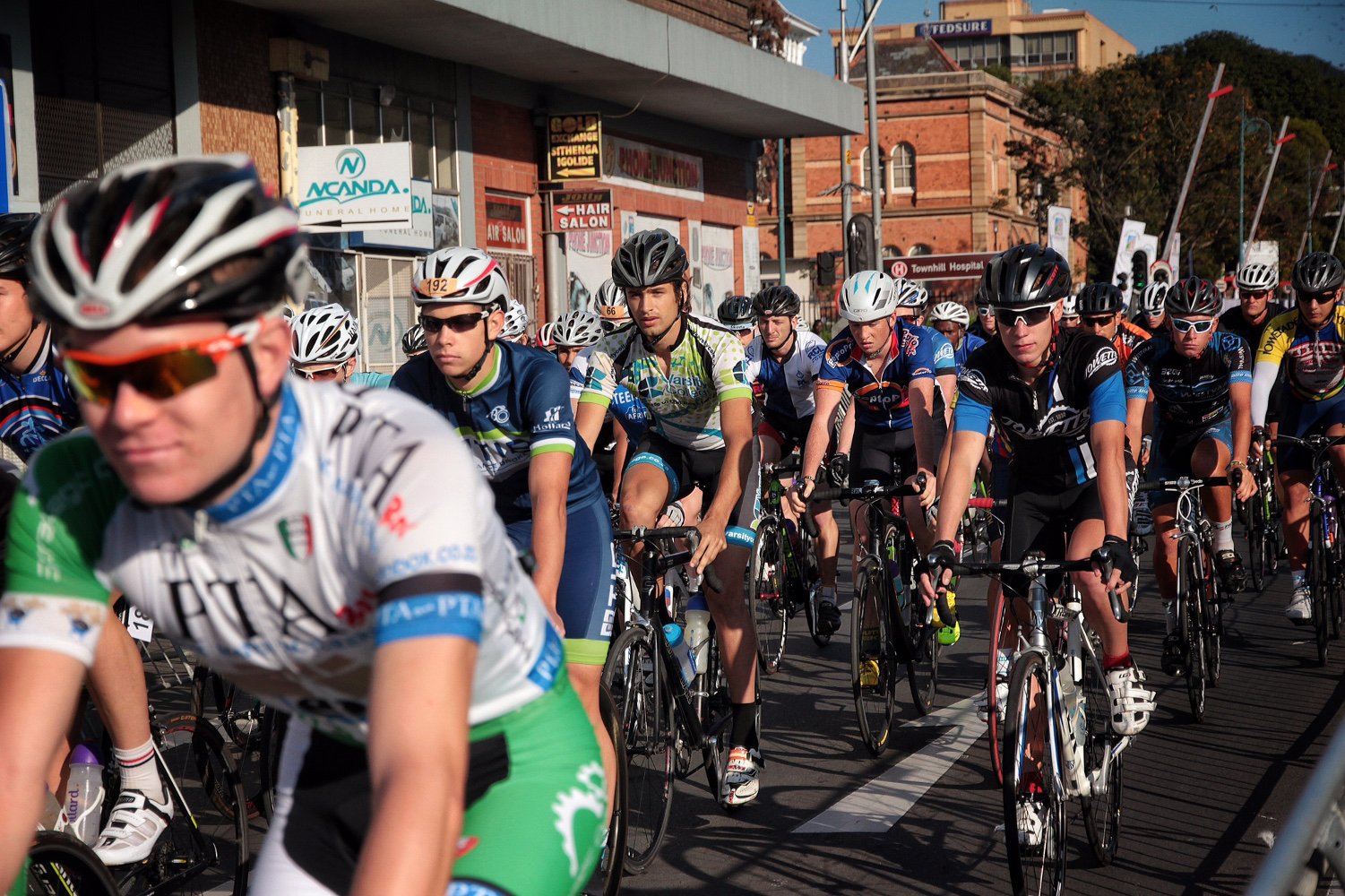Amashova Durban Classic.
A bike race is an interesting thing. If you watch the professionals at work you get to see some of the toughest athletes in the world fight, and sometimes bleed, to get to the finish line first. I am not one of those people. I love to ride but I fall firmly into what are referred to – mostly unkindly – as Mamils (Middle Aged Men In Lycra).
When the Mamils are involved we are not talking about the Tour de France but rather races that have a public component – the likes of the Cape Town Cycle Tour, the 94.7 Cycle Challenge and the Amashova Durban Classic – and here the more interesting action happens a little further back.
For those whose only interaction with cycling comes from being blocked in and unable to get to Woolies when a big race comes through their suburb it is important to understand that a big race (like the three mentioned above) is not just one race. It’s actually thousands of little races. All those people at the back are not riding against anyone else, they are riding against themselves, for thousands of different reasons.
At the head of the mass ride you have the groups of fast riders who ride a lot like the pros – on expensive bikes and in tightly formed groups – the fastest rider in what I would call a normal group was a mere 10 minutes behind the fastest professional at the Tsogo Sun Amashova Durban Classic (to give it its official full name), which wound its way from Pietermaritzburg to Durban on Sunday.
Normally, I find myself solidly in the middle of the field. Slower than most other men in their 40’s but fast enough to just miss the worst of the afternoon heat. But some days, and Sunday was one of those days, things just don’t go your way.

What started out as a normal ride turned nasty when I got my first puncture just after halfway, on Alverstone. At this point, I did what any cyclist would do, swore a lot and then found a shady spot on the side of the road and spent the next 20 minutes alternating between swearing at my tyre for not wanting to get back onto the rim and actually getting it back on. And taking a little time to watch the rest of the race go by. Alverstone is a mean hill just after halfway, not as famous as Inchanga – which people remember from watching the Comrades on TV – but significantly tougher. It starts with a brutal, short and sharp uphill, gives you a tiny respite and then finishes you off with a long twisting climb all the way to the top. And then to add insult to injury there is no nice long downhill afterwards, you have to tackle Botha’s Hill straight afterwards.
About 20km down the road I got my second puncture and at this point I had no spare tube and even less patience and was ready to toss my bike into the bushes in Hillcrest and hitch a ride back to the start. But sitting on the side of the highway with other riders with similar aliments, you get a chance to look at the other riders, or pushers, people who have run out of gears but are determined to get to the top of that hill, and the next one, and the next one until they see the Moses Mabida stadium in front of them.
At that point one of the cars that acts as a roving bike shop for the day came past and saved my race. With fresh rear tyre, and tube I was back in the saddle.
With legs that were now distinctly unimpressed with me and a good few kilometres to go before the end I had a chance to think about some of the people I spent a few minutes with on the race. We were not riding the same race, some of us started earlier and some started later, some were doing it for the first time and some were seasoned veterans. There was the man (who’s name I didn’t get) who lent me his pump just before the start when mine wasn’t working and who I found on the route just before halfway.
There was Prakash, who was wandering around the water point at halfway carrying his bike looking for some help changing a tyre and who I gave a hand to.
There was Nicolette, the paediatrician, who was riding for her first, but I’m guessing not her last, time.
There was the woman in the Tsogo Sun kit who I passed twice and exchanged a few words with. She didn’t look like she was going to come back. Everyone comes for their own reason but have the same aim: to make it to the sea in one piece.
And then there are the people on the side of the road: those who come out each year to shout encouragement, the kids from the Ethebeni School who stood there and cheered us on, kids hoping to score some sweets from a passing rider, the man standing on the side of the road proposing marriage and the folks sitting in their camping chairs on the highway into Durban just watching the passing parade.
By the time I hit the finish mat in Durban I was an hour and a half later than I thought I would be when I left Pietermaritzburg almost six hours earlier. But the point of a bike race is not how fast you go, its that you go. Amashova may have had the last laugh this year but next year I’ll be back and hopefully spend a little less time on the side of the road.